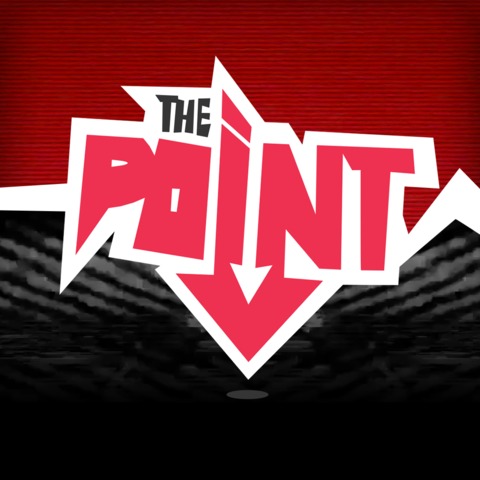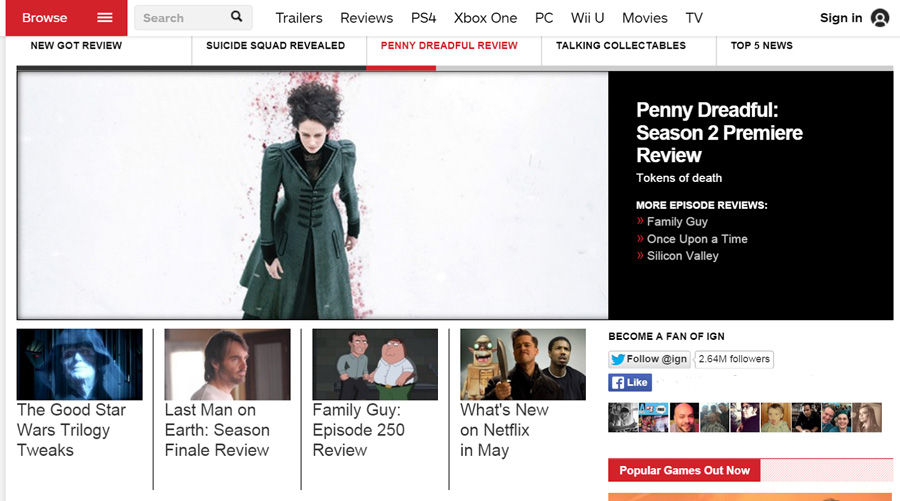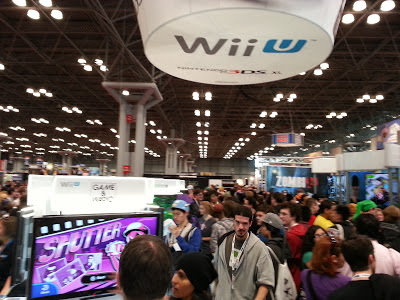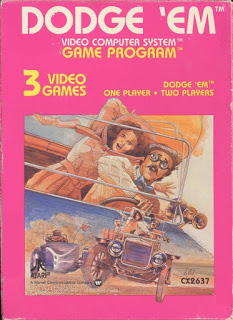December 10, 2013
In
Uncategorized
Polygon’s Emily Gera wrote a brilliant post on her personal blog today about how the games industry has turned into a spectator sport akin to World Wrestling Entertainment. It’s a fantastic read, perhaps the most insightful post I’ve read about games this year. And it really hit home with how I’ve been feeling lately as a 39-year-old gamer who is just kind of sad about the state of the industry today.
First, go read the article on Emily’s blog.
I was actually having a conversation on Twitter with Co-Op contributor Dave Fetterman that directly relates to the sentiment expressed in Gera’s post. I was reflecting on the fact that as of late I find myself becoming part of the Nintendo Defense Force, feeling the need to reply to the constant negativity that seems to be aimed at the WiiU and Nintendo in general.
I’m a WiiU and 3DS owner and I have two kids, so for us Nintendo’s consoles are a constant source of fun and entertainment. I also have a Xbox 360, PS3 and a PC, so I play games wherever I can get them. In this last console generation, I’ve probably spent the most time on Xbox 360. Not that any of that matters, except to say that I don’t have a “console of choice” per se.
The thing that kills me is these narratives that are built up not just by the rabid fanbases of each console, but the games media as well. Over the past year, and into this holiday season, one of the biggest is that not only is the WiiU not a “next gen” console, but it’s already dead in the water. There is no reason to buy a WiiU, and there is no hope of it recovering from its slow start. Some are even calling for Nintendo to get out of consoles entirely, either moving exclusively to handhelds, or giving up hardware altogether and becoming the next SEGA.
Consider this: you can get a WiiU bundle for $299 right now that either comes with Wind Waker HD, Skylanders or two Super Mario games. Right now, the WiiU has a slew of great games to play: ZombiU, Pikmin 3, Nintendoland, Super Mario 3D World, Wonderful 101, Lego City Undercover and plenty more. And the console is backwards compatible, which means you have the entire Wii library as well. It’s a great value, especially as a family console. But that narrative is boring, right? Who wants to talk about what a fun experience the console can be when we can all hail its impending doom from the highest mountain, right?
When it comes to the PS4 and the XBox One, the ebb and flow of the narrative changes daily. The PS4 goes from being more powerful than the XBox One to having a worse launch lineup to being a better value to being inferior because it doesn’t let you control your living room in the same way XBox One does. On the flipside, XBox One had terrible party chat one day, a lack of free demos the next and then Kinect makes it better than the PS4 (despite the fact no one wanted it before launch and thought its addition was not worth the extra $100).
And this stuff isn’t just message board or comment section chatter. These are storylines that all of the major gaming news sites are feeding into daily. Much of the chatter from gamers is happening in response to these stories. The gaming news sites are just as much the creators of these narratives as the fans. The same goes for the publishers and hardware makers themselves, and you don’t have to look any further than this year’s E3, when the mudslinging between Microsoft and Sony was on stage for all the world to see. Microsoft ended up changing their whole strategy for the console based on the narrative that games journalists helped create when they took fan reactions and jabs from Sony and ran with them relentlessly. Microsoft was the bad guy–they didn’t get it. Sony came out of E3 as the “winner,” the company that really understood what gamers wanted from the next generation. Nintendo wasn’t even allowed to be part of the discussion, as the media took Nintendo’s lack of a spectacle presentation as a reason to marginalize them completely and just focus on the narrative that the upcoming generation was a two-horse race.
All of this is where the spectator sport of the games industry comes in, and where Emily Gera’s analogy is so brilliant. There has to be Good Guys (Babyfaces) and Bad Guys (Heels) in order for anyone to care. Those Good Guys and Bad Guys will switch places when it suits the overall narrative, but there will always be someone to root for and against, and those creating the narrative get to decide what roles the actors are assigned to.
This whole spectator sport aspect of the industry takes the focus off of the games, off of the fun, and off of the escape that games offer me. It also devalues the exact type of writing that Emily Gera displayed in her brilliant post. Because if gamers would rather read about how many PS4’s failed over launch weekend or how dismal WiiU’s sales were this week than a feature on the design of Resogun, that’s what Emily and those who work for other gaming sites will be writing about. And that just feeds into the spectacle our hobby has become.
The absolute saddest thing about the current state of the industry is that some of the best writers out there, people who earn a living writing about games, have to turn to their personal blogs in order to post ideas that are not part of the larger narratives, part of the spectacle. If you think I’m exaggerating, look at how many current and former games journos have their own side blogs and podcasts, and look at what they produce for content. For most of them, those side projects are where they get to actually celebrate games and talk about the things they love.
Now, the state of the industry isn’t going to change anytime soon, although I hope articles like Emily Gera’s will at least get people to do some self-reflection. I would love to see something like Upworthy come along for the games industry. Some sort of aggregator for games writing that celebrates the hobby, where features about people’s experiences with games and what they love about them are shared and promoted, as opposed to the gladiator arena that currently dominates games media.
I’m rambling now, so I’m going to wrap this post up. But you really need to go and check out Emily Gera’s post, because she is dead on.








